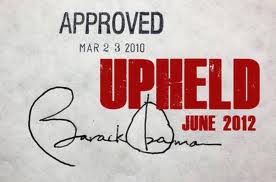The short answer is that we don’t know. The longer answer, as this Express-News story indicates, is that we’ll never really know.
Self-sufficiency. Distrust. Desire for flexibility.
Those are some reasons many consumers bypassed health insurance plans sold on government-run exchanges and instead chose to buy coverage directly from insurance agents or brokers before open enrollment ended March 31.
No one is sure exactly how many people did this. There is no singular source that aggregates nationwide health insurance enrollment numbers outside the exchanges. But these consumers will push the total number of enrollments for 2014 health coverage beyond the 7.1 million Americans who went through the federal- and state-operated exchanges.
In Texas, “it could be a big number,” said Stacey Pogue, senior policy analyst at the Center for Public Policy Priorities in Austin. “It could be more people than enrolled in the marketplace in Texas. But we don’t know. It certainly will be a significant number of people.”
The state Department of Insurance doesn’t collect enrollment figures.
Those who did not go through the exchange weren’t able to apply for tax credits or subsidies to reduce their premiums. That’s because tax credits can only be obtained through government-run markets.
There are a number of reasons why some consumers went a different route, independent agents and brokers say. Some made too much money to qualify for tax credits. Some didn’t believe in accepting subsidies. Others feared giving personal information, such as Social Security numbers, to the U.S. Health and Human Services Department.
“Frankly, I have talked to a number of consumers who are concerned about what they feel is an invasion of privacy,” said Carla Adams, president-elect of the San Antonio Association of Health Underwriters and an independent agent. “All of the information that they have to provide once you go on to the exchange … that makes some consumers nervous.”
[…]
Some consumers bypassed the exchange because they wanted the flexibility to choose doctors or hospitals they preferred instead of being limited to a smaller network, several agents said.
For instance, some shoppers who selected certain types of plans on the exchange after verifying their doctor was part of the network learned two weeks later that the doctor was no longer accepting patients with that form of coverage. Loretta Camp, co-owner of Davidson Camp Insurance Services in San Antonio and an independent agent, said her agency intervened in such cases so patients could stay with their doctors.
Local agents also helped consumers going through the federal exchange who wanted professional help to select the most cost-effective plans.
There is no extra cost for consumers who use agents’ or brokers’ services, several experts in the insurance field said. Insurance carriers pay agents’ commissions.
“The reality is, what I’m experiencing with consumers, they’re confused when they try to get on the exchange themselves,” Adams said. “They have no idea what the true differences are between these plans or how to compare, and they’re overwhelmed. Someone like an agent who understands the inner workings of these plans can help them navigate through the differences.”
The state of Texas, of course, tried to make it as hard as possible for non-profits and charitable organizations to provide navigator services, but that’s neither here nor there at this point. We don’t know how many Texans got coverage through the federal healthcare.gov exchange yet. The most recent numbers were 295,025 enrollments as of March 1 – see here for the breakdown – but I haven’t seen anything more up to date than that. The main thing to keep in mind is that whatever the final figure for Texans enrolling via healthcare.gov is, the real number – the number of people who got coverage is higher, perhaps much higher. It would be nice to know how much higher, but that number isn’t available. We’ll have to rely on polling data for that. Here’s hoping we get that soon for Texas.

